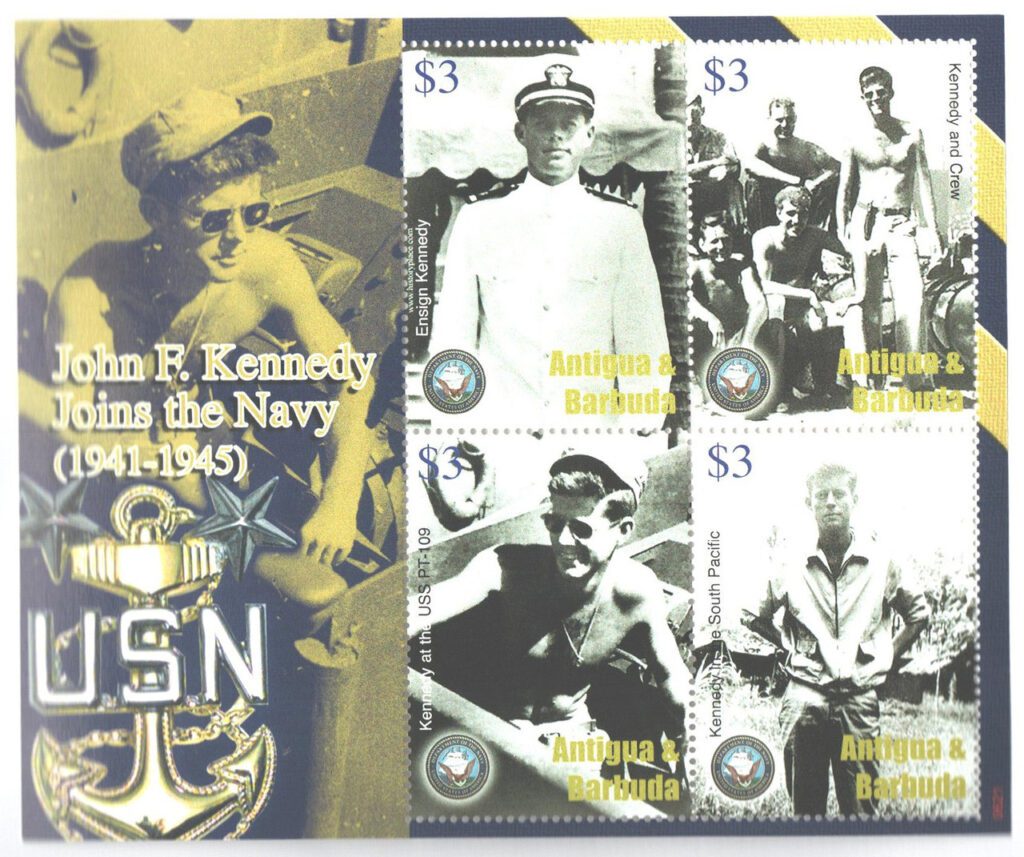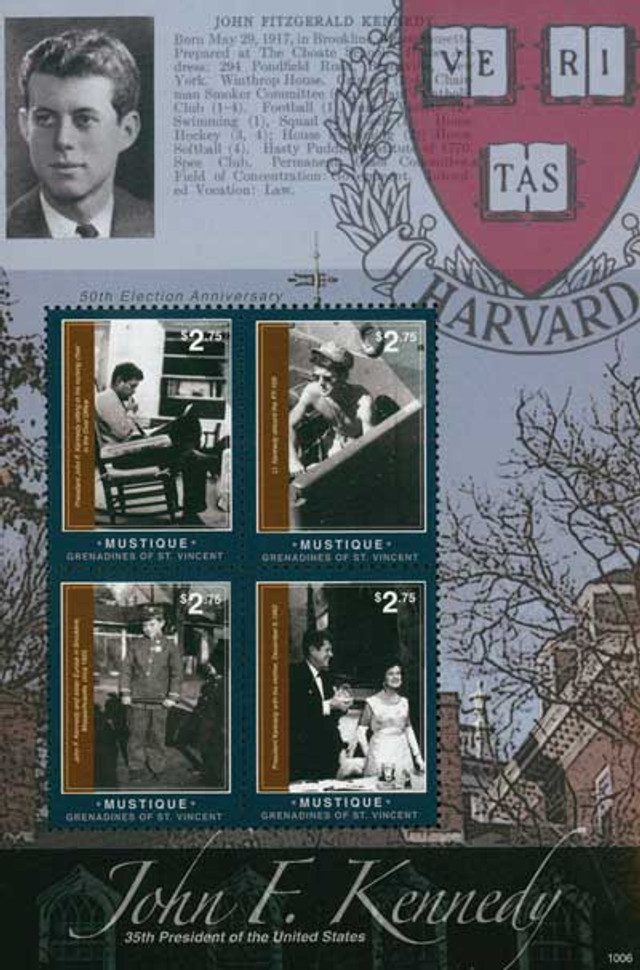On August 2, 1943, future president John F. Kennedy saved the majority of his PT-109 crew after a Japanese destroyer rammed them.
As a member of a wealthy and prominent family, Kennedy likely could have avoided military service. Even as World War II raged on in Europe, he graduated with honors from Harvard and had a promising future. But that’s not how he did things.
Instead, young “Jack” Kennedy used his family influence to join the military. His back problems caused the army to reject him, but he wouldn’t give up. In September he joined the Navy. Soon, America was drawn into the war and Kennedy eventually was promoted to lieutenant (junior grade) and given command of a patrol torpedo (PT) boat.
Late in the night of August 1, 1943, Lieutenant JG Kennedy and his small crew took one of fifteen boats out to patrol the waters in Blackett Strait near the Solomon Islands. They were charged with attacking Japanese ships to disrupt supply routes. In the early morning hours of August 2, 1943, they saw a dark shape approaching from 200 to 300 yards in the distance. They first thought it was another group of American PT boats, but soon found it was a Japanese destroyer.
As PT-109 turned to fire torpedoes, the advancing destroyer rammed right through, slicing the boat in half. Kennedy and five others clung to the wreckage, and five more were floating about 100 yards away. Kennedy helped get these men to the temporary safety of the wreckage.
By dawn on August 2, it was obvious that the remains of PT-109 were going to sink. Rather than go down with the ship, Lieutenant Kennedy and his men decided swim to an island three miles away. Kennedy was a strong swimmer, having competed on Harvard’s varsity swim team. Not only did he help push the raft, but he also towed a badly burned crewman by grasping the life preserver strap between his clenched teeth. After about 15 hours in the water, they reached the island.
After a couple of days on the island with no food or water, Kennedy and his crew swam to a neighboring island. There was no fresh water to be found there and the coconuts made some of the men ill. Kennedy was determined to try the next island over.
Upon arrival on the island, Kennedy found a small box of Japanese rations and a tin of water. He found two scouts for the Allies on the island. Kennedy scratched a message on a coconut shell and sent them for help. That shell later sat on his desk in the White House during his presidency.
Finally, on August 8, 1943, after six days, PT-109’s surviving crewmembers were rescued. For his bravery, Kennedy was awarded the Navy and Marine Corps medals, as well as a Purple Heart for a back injury he received in the wreck.
Kennedy was then promoted to full lieutenant and continued to command a motor torpedo boat. In March 1945, he was released from active duty because injuries sustained during the incident had made his back problems worse.
| FREE printable This Day in History album pages Download a PDF of today’s article. Get a binder or other supplies to create your This Day in History album. |
Discover what else happened on This Day in History.






Story was more fiction than fact JFK’s father paid to have PT109 film produced. No award was given to JFK for the action
Are you saying he did not receive the Navy Marine Corps Medal?
Sorry but facts are facts not incorrect comments. John F. Kennedy Received “Non-combat” Recognition for Wartime Action
John F. Kennedy
Lt. John F. Kennedy in his Navy uniform wearing Navy and Marine Corps Medal, Purple Heart ribbon, and campaign ribbons. National Archives photo
Apparently taking the view that the collision between destroyer and PT boat did not involve direct combat, the Navy awarded John F. Kennedy its highest non-combat decoration for heroism, the Navy and Marine Corps Medal. Kennedy also received the Purple Heart – generally considered a combat award – for his injuries.
Thank you for your Service, USPS Rural Carrier Craft. In case anybody’s paying attention, the current back injury incidence is skyrocketing.
RIP JFK
He was a great President and hero.
While I had often heard about JFK and PT 109 I never realized the depth and scope of what actually happened. It is very sad how far America has fallen in its leadership. I know there are brave men and women out there who are serving their country now and others who will carry the mantle for this country and bring it back to greatness through these troubling times. Thank you Mystic for this article that is so very needed right now and brings to light the bravery of JFK and all the men and women who willingly served their country. It gives mr hope.
He was an incredible man whom history would measure themselves against. I am so proud to have known him and have shared a portion of his History.
I am still having to hunt for the daily stories, even though I have signed up several times to receive them on a daily basis.
It is my understanding that the story about the Pt 109 did not come about until he was running for office. And no one touched on fact that it’s hard no understand why they got rammed, it was smaller, faster and more maneuverable. His father need to build him up, because his older brother that had been groomed to be president was kill in the war. The same father who gained his power from illegal means. Also pushed the fact of being Catholic, but he or his father did things that were not very Christian. Don’t get me wrong as president he did some great things for us as a country. Like so many people there is good and bad.
In what branch of the military did you serve ???
You sound like a Southern Baptist !!!
“The exact actions of PT-109 at the moment it was rammed by the Japanese destroyer Amagiri on August 2, 1943, are not definitively detailed in historical records, but available evidence suggests it was not actively preparing to launch torpedoes at the precise moment of collision. PT-109, under John F. Kennedy’s command, was part of a nighttime patrol in the Blackett Strait, tasked with intercepting Japanese supply convoys. The boat was likely maneuvering or idling in the dark to avoid detection while seeking targets, as PT boats typically operated stealthily to position for torpedo attacks.The collision occurred around 2:30 a.m. in poor visibility, with PT-109 moving slowly or stationary to minimize its wake. The Amagiri, traveling at high speed, struck PT-109 unexpectedly, splitting the boat. Historical accounts, including Kennedy’s own reports and crew testimonies, do not indicate the crew was in the act of arming or aiming torpedoes at that instant. Instead, the suddenness of the collision suggests PT-109 was caught off guard, unable to react or launch an attack. The mission itself was combat-oriented, but the ramming likely occurred before PT-109 could engage a specific target.”
I don’t think Southern Baptists are the only one’s who didn’t and don’t condone extramarital daliances or smuggling alcohol against the law.